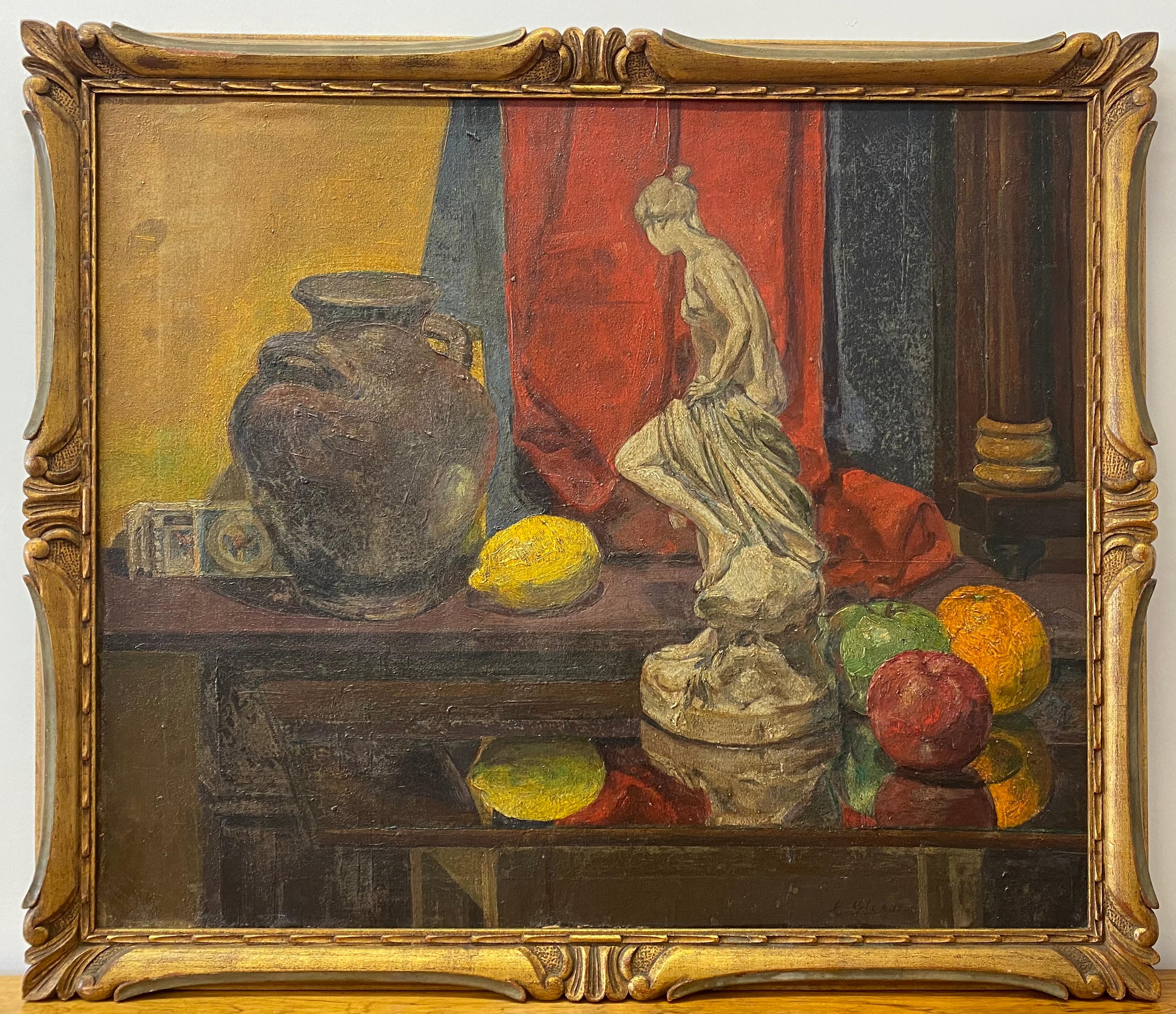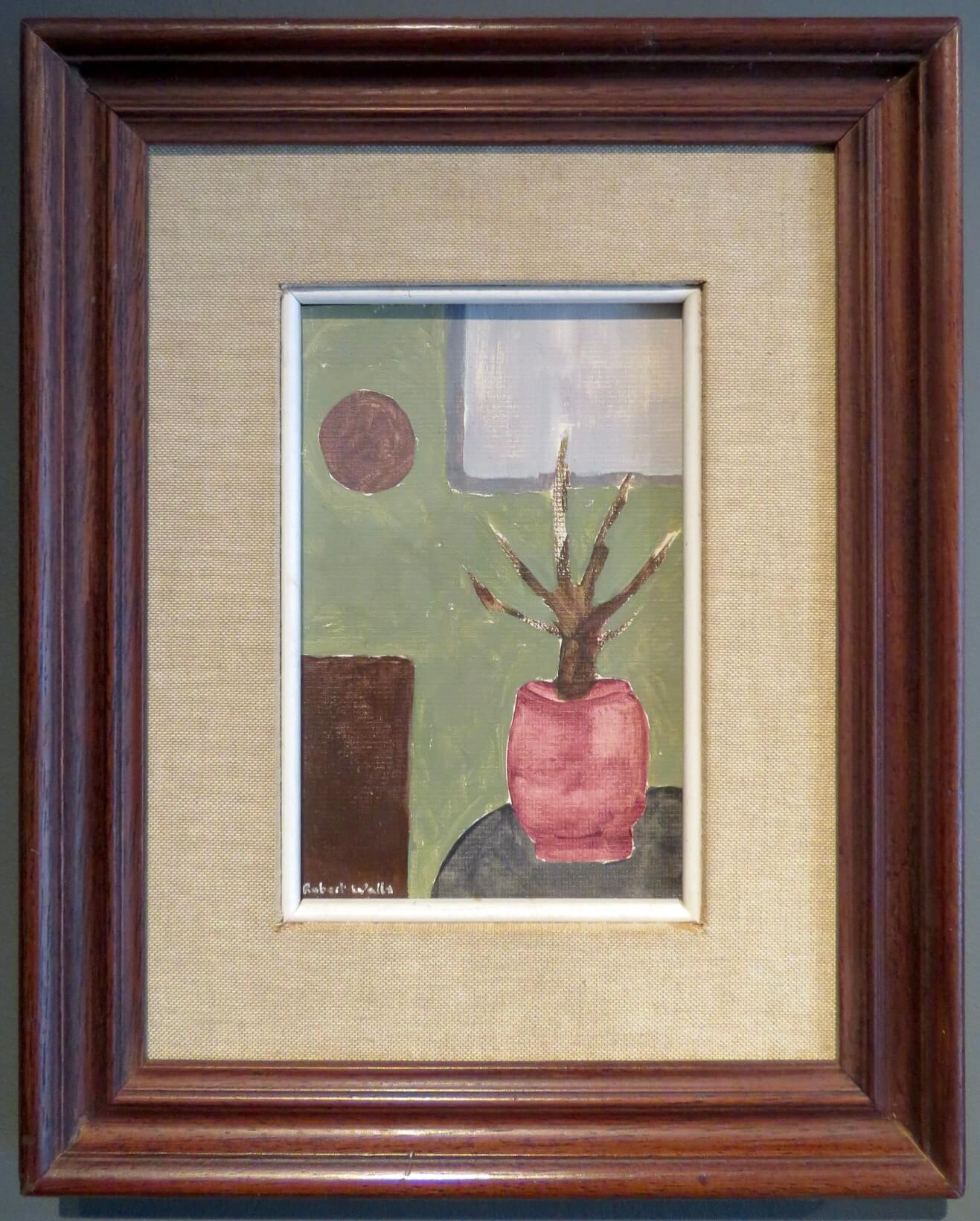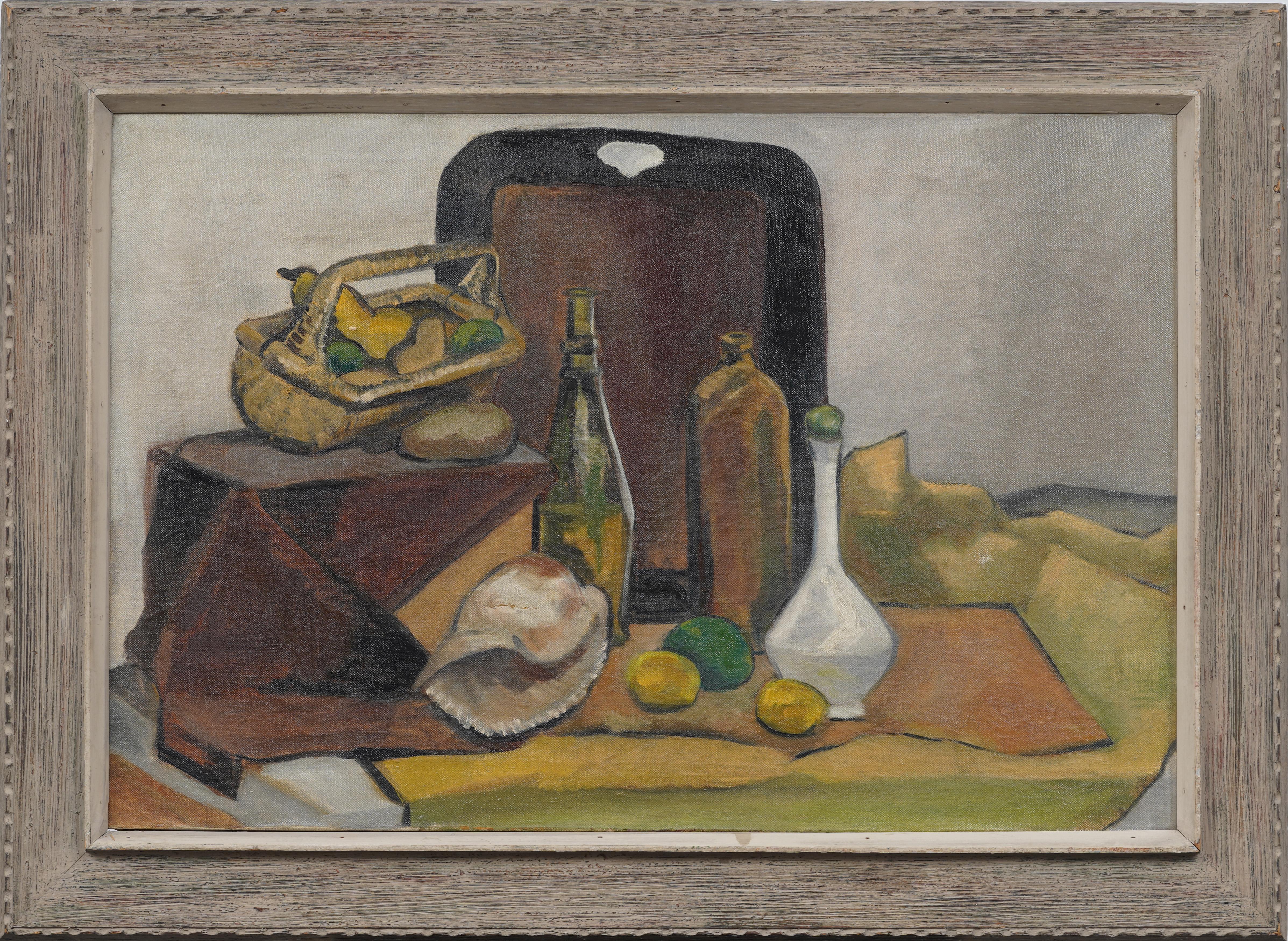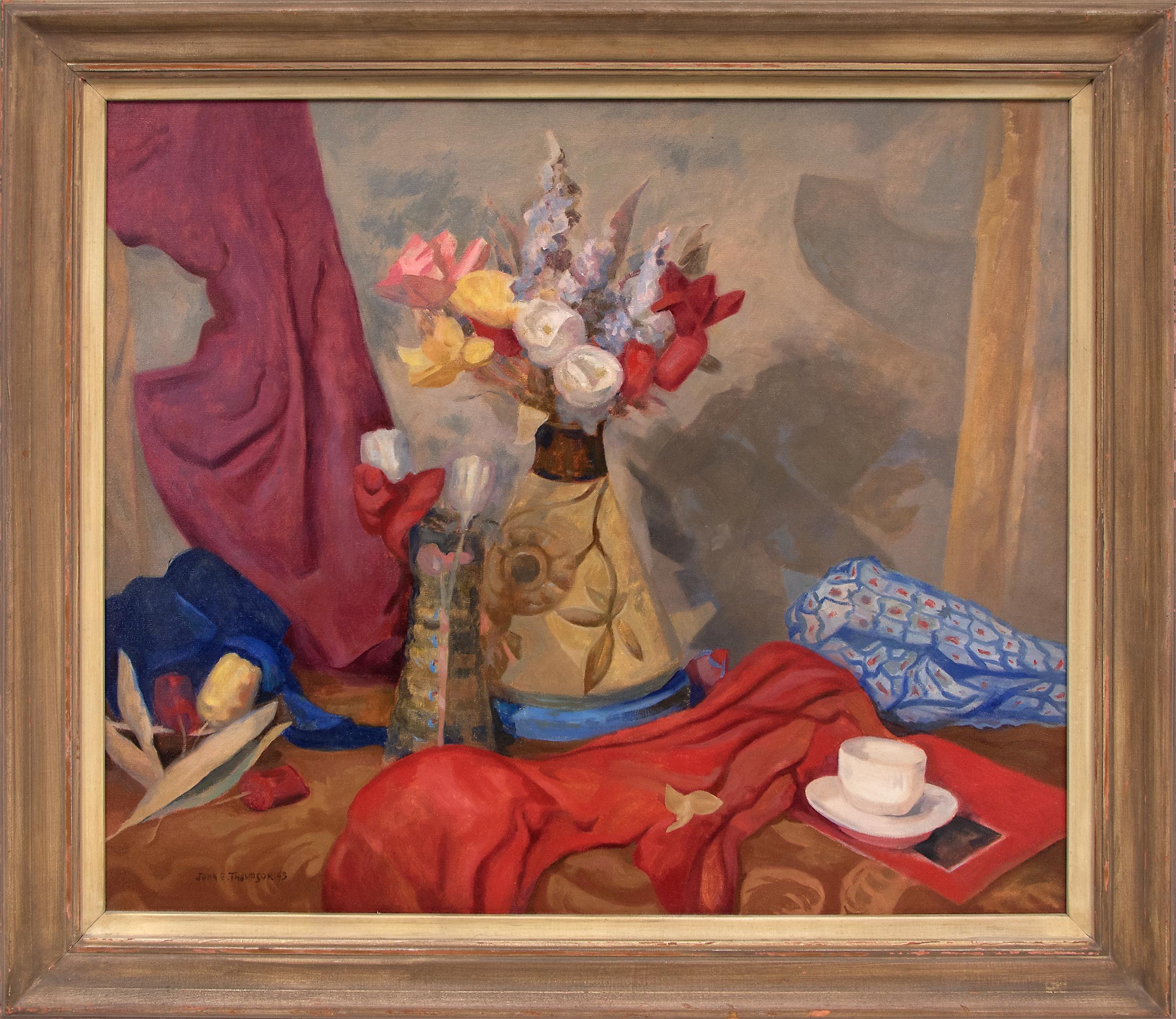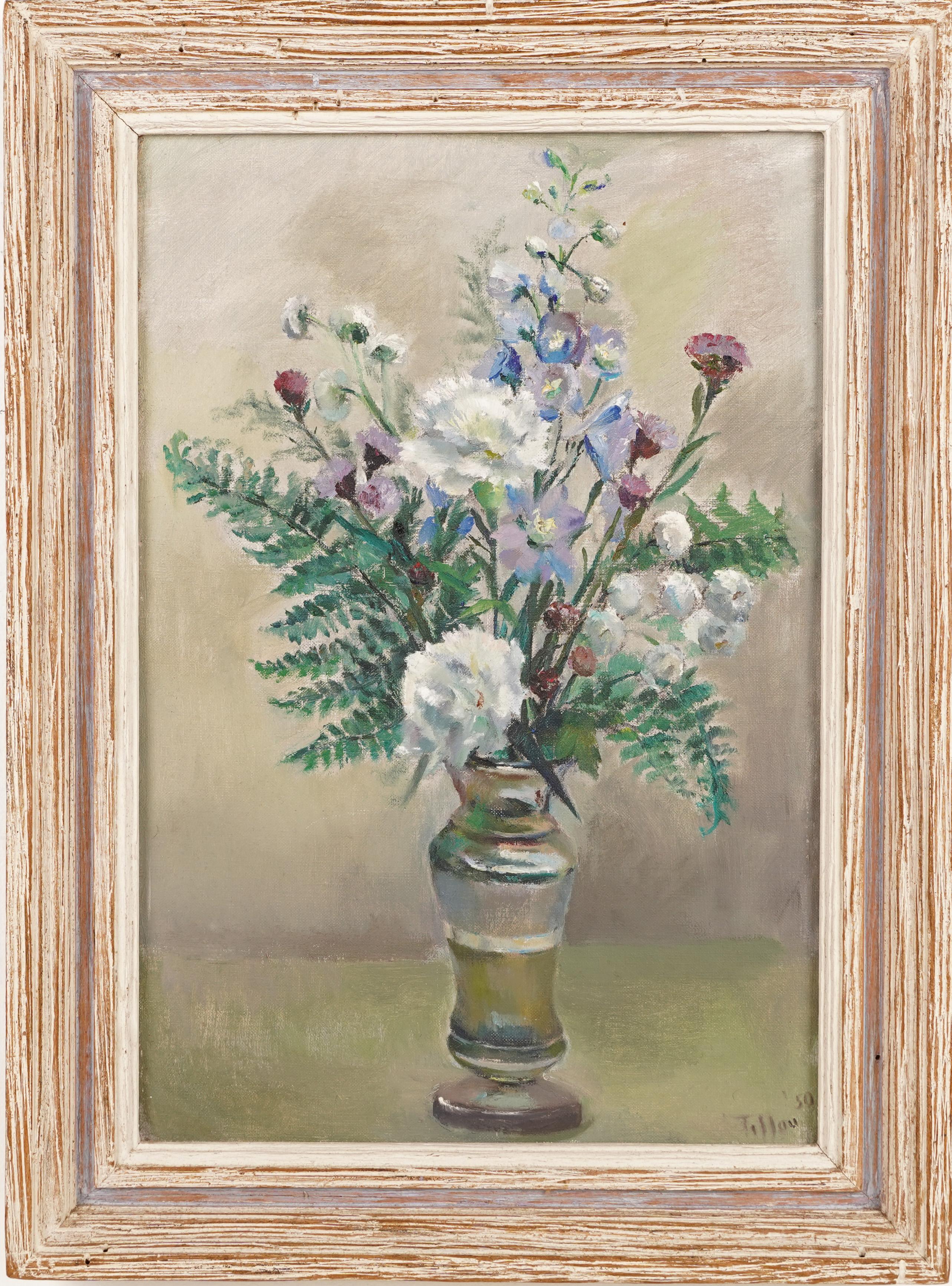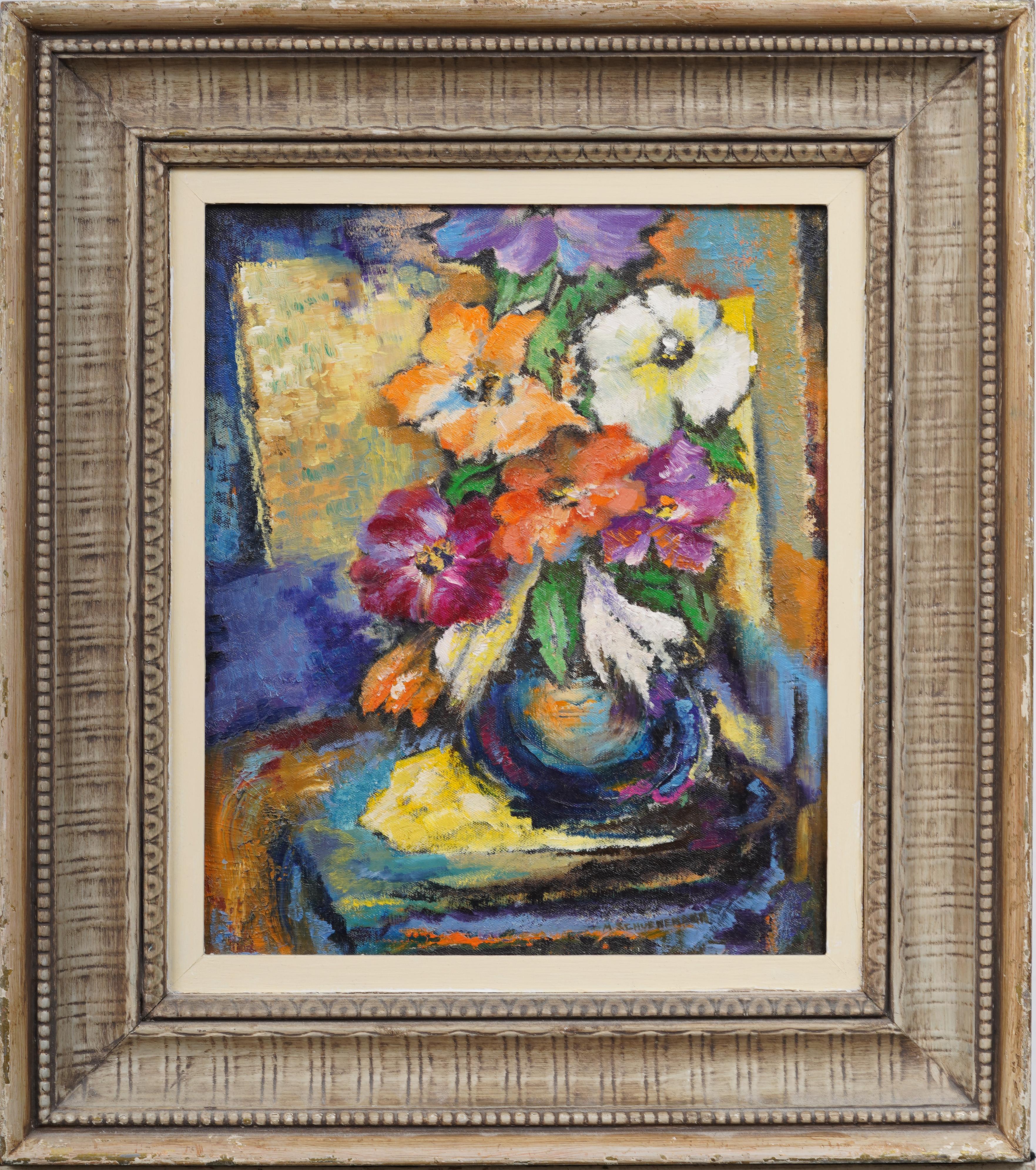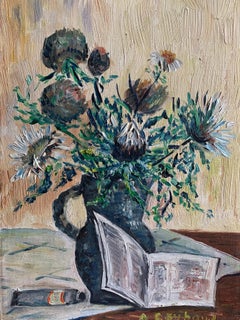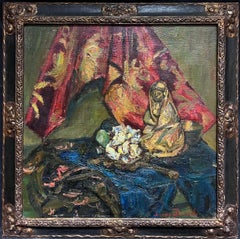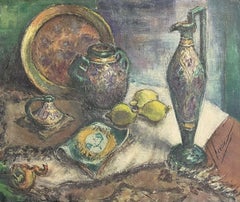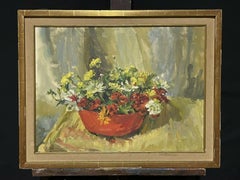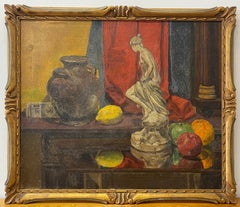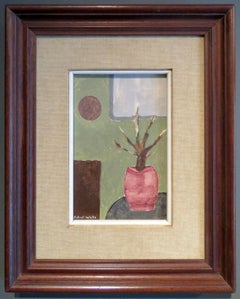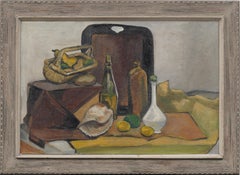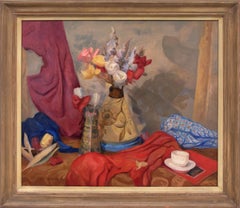Items Similar to 1930's English Impressionist Signed Oil Painting Still Life Thick Impasto Paint
Want more images or videos?
Request additional images or videos from the seller
1 of 12
Harry Bloomfield1930's English Impressionist Signed Oil Painting Still Life Thick Impasto Paint1930's
1930's
$1,625.07
£1,200
€1,406.36
CA$2,241.04
A$2,517.71
CHF 1,315.51
MX$30,729.80
NOK 16,703.08
SEK 15,722.43
DKK 10,494.80
About the Item
Interior Still Life
by Harry Bloomfield (British, 1883-1940) *see notes below
signed verso oil on canvas, framed
framed: 28 x 24 inches
canvas: 22 x 18 inches
Provenance: private collection
Condition: very good condition, with old craquelure throughout.
Harry Bloomfield
1883-1941, English
Although born in London, Harry Bloomfield resided for most of his life in Belgium and France. He had traveled to Paris as a young man and had joined a circle of artists that included Renoir and Guillaumin and had commenced painting in the manner of the Impressionists. It appears that he had established a studio in Brussels by 1900 and his work was soon becoming appreciated by the Belgian art cognoscenti. Painting with a vivid palette and in a free, vigorous fashion his portraits, nudes, landscapes, and still-lifes were eagerly collected. Dividing his time between studios in Paris and Brussels he was exhibiting his work in both countries but achieved greater success in Paris. In 1913 a work entitled ‘Femme Assoupie’ was accepted for exhibition at the Salon d’Automne, a venue associated with the works of the Impressionists and post-Impressionists. Gerard Schurr in his book Dictionnaire des Petits Maitres makes note of Bloomfield’s ‘…construction toute cezannienne’ referring to his predilection for painting in the manner of Cezanne.
For more any more information please do contact us with any questions you may have. Thank you.
- Creator:Harry Bloomfield (1883 - 1940, English)
- Creation Year:1930's
- Dimensions:Height: 28 in (71.12 cm)Width: 24 in (60.96 cm)
- Medium:
- Movement & Style:
- Period:
- Condition:
- Gallery Location:Cirencester, GB
- Reference Number:1stDibs: LU509316499362
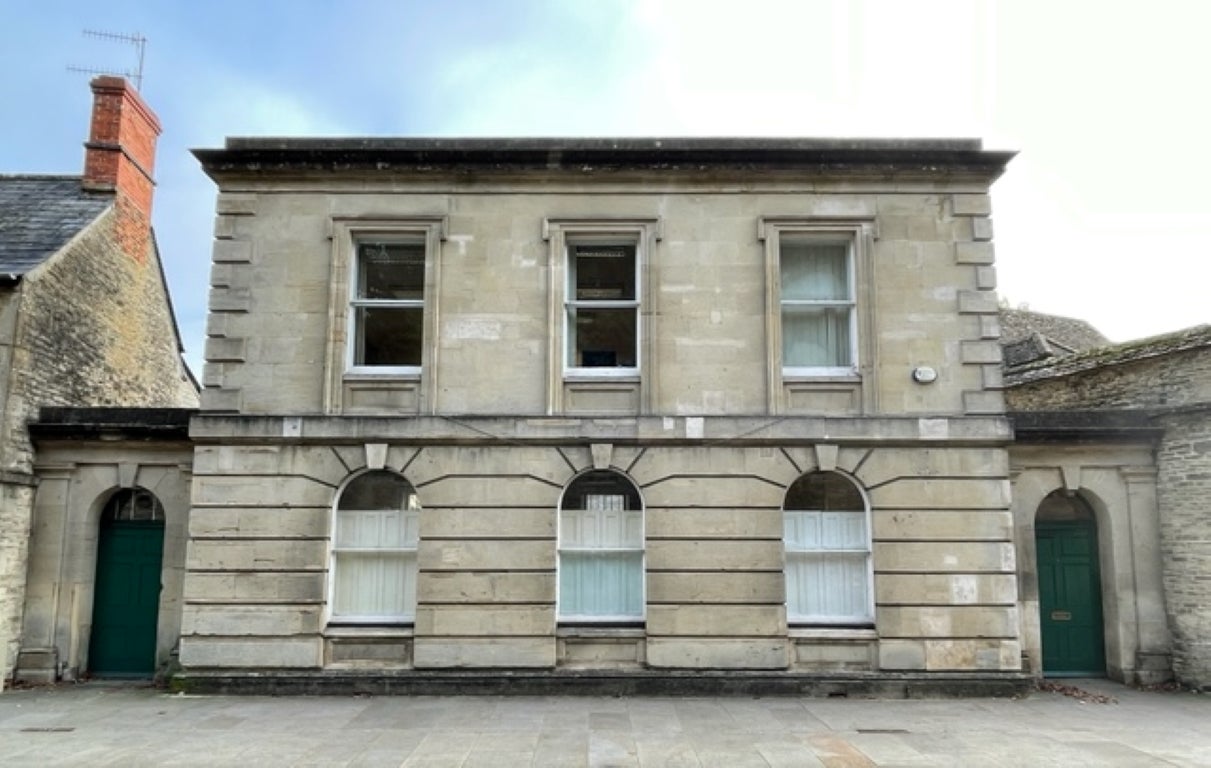
About the Seller
5.0
Platinum Seller
Premium sellers with a 4.7+ rating and 24-hour response times
Established in 1989
1stDibs seller since 2016
4,659 sales on 1stDibs
Typical response time: 1 hour
- ShippingRetrieving quote...Shipping from: Cirencester, United Kingdom
- Return Policy
Authenticity Guarantee
In the unlikely event there’s an issue with an item’s authenticity, contact us within 1 year for a full refund. DetailsMoney-Back Guarantee
If your item is not as described, is damaged in transit, or does not arrive, contact us within 7 days for a full refund. Details24-Hour Cancellation
You have a 24-hour grace period in which to reconsider your purchase, with no questions asked.Vetted Professional Sellers
Our world-class sellers must adhere to strict standards for service and quality, maintaining the integrity of our listings.Price-Match Guarantee
If you find that a seller listed the same item for a lower price elsewhere, we’ll match it.Trusted Global Delivery
Our best-in-class carrier network provides specialized shipping options worldwide, including custom delivery.More From This Seller
View AllVintage French Signed Oil Thick Impasto Paint Still Life Flowers
Located in Cirencester, Gloucestershire
"Still Life"
French School, circa 1970's
signed, "G. Raybaud"
oil painting on board, unframed
painting: 13 x 9.5 inches
provenance: private collection, Cote d'Azur, France
Delightf...
Category
Mid-20th Century Impressionist Still-life Paintings
Materials
Oil
1900's French Post-Impressionist Signed Oil Female Artist Still Life Objects
Located in Cirencester, Gloucestershire
Les Blanches Roses
by Louise Derival, French early 20th century
signed oil on canvas, framed in a beautiful period frame.
framed: 31 x 31 inches
canvas: 26 x 26 inches
provenance: p...
Category
Early 20th Century Post-Impressionist Still-life Paintings
Materials
Oil, Canvas
1940's French Still Life Post-Impressionist Signed Oil Still Life Lemons etc
Located in Cirencester, Gloucestershire
Artist/ School: French School, mid 20th century, signed
Title: Still Life
Medium: oil painting on canvas, unframed
Size: painting: 21.25 x 25.75 inches
Provenance: France
Condi...
Category
Mid-20th Century Post-Impressionist Interior Paintings
Materials
Canvas, Oil
Large Mid 20th Century Signed Oil Painting Still Life Flowers in Interior
Located in Cirencester, Gloucestershire
Artist/ School: British mid 20th century, signed
Title: Still life of flowers within an interior
Medium: oil painting on canvas, framed
framed: 21.75 x 2...
Category
20th Century Modern Still-life Paintings
Materials
Oil, Canvas
Large French Post Impressionist 1930's Oil Still Life Artists Studio Interior
Located in Cirencester, Gloucestershire
The Artists Studio Interior
French Post Impressionist, first half 20th century
oil on canvas, unframed
canvas: 29 x 20 inches
provenance: private collection
condition: very good and ...
Category
Mid-20th Century Modern Interior Paintings
Materials
Oil
Mid 20th C French Impressionist Signed Oil Vintage Flowers Montparnasse Frame
Located in Cirencester, Gloucestershire
Floral Still Life
French School, mid 20th century
indistinctly signed
oil on board, framed in original mid 20th century Montparnasse frame
framed: 29 x 33.5 inches
board: 21 x 26 in...
Category
Mid-20th Century Post-Impressionist Still-life Paintings
Materials
Oil
You May Also Like
Early 20th Century Still Life Oil Painting by C. G. Loane
Located in San Francisco, CA
Early 20th Century Still Life Oil Painting
Beautiful still life painting by Irish artist Cecilia G. Loane
Original oil on board
Dimensions 24" wide x 20.5" high
The frame measure...
Category
Early 20th Century Still-life Paintings
Materials
Oil, Board
original English Mid20th Century Impressionist oil painting MODERNIST STILL LIFE
Located in Cirencester, GB
ARTIST: Robert Bob 'Guy" Walls (1927-1999) New Zealand / English
TITLE: "Interior Still Life With Potted Plant"
SIGNED: lower left
SIZE: 32cm x 26cm inc frame
MEDIUM: oil on board ...
Category
Mid-20th Century Interior Paintings
Materials
Oil
Large Antique American Modernist Still Life 1940s Nicely Framed Oil Painting
Located in Buffalo, NY
Antique American modernist interior still life oil painting. Oil on canvas. Framed. In excellent original condition. Handsomely framed in a modernt wood molding. Excellent cond...
Category
1940s Modern Interior Paintings
Materials
Oil, Canvas
John E. Thompson 1945 Interior Still Life, Colorado Modernist Oil Painting
By John Edward Thompson
Located in Denver, CO
This original 1945 oil painting by renowned Colorado modernist John E. Thompson (1882–1945) captures a serene and elegant interior still life. Featuring a delicate arrangement of a f...
Category
1940s Abstract Impressionist Still-life Paintings
Materials
Oil
Virginia Tillou Signed Antique American Female Modernist Still Life Oil Painting
By Virginia Tillou
Located in Buffalo, NY
Vintage modernist still life painting by Virginia Tillou (1906 - 1995). Oil canvas. Housed in a period Heydenryk frame. Image size, 12L x 18H. Sig...
Category
1940s Modern Still-life Paintings
Materials
Canvas, Oil
Antique American Modernist Framed Flower Fauvist Still Life Signed Oil Painting
Located in Buffalo, NY
Impressive early American modernist flower still life oil painting. Framed. Oil on canvas. Signed. Image size, 12H by 10L.
Category
1930s Modern Still-life Paintings
Materials
Canvas, Oil
More Ways To Browse
Signed Cezanne
1930s British
1930s British Paintings
French Impressionist Oil Paintings 1900
Renoir Oil
Renoir Oil Painting
1930 Nude Oil
Paintings Signed Gerard
Nude Old Man
1930s Man Portrait Oil Painting
Gerard Petit
Famous Etchings
Kennedy Photo
African American Portrait
Black Human Sculpture
1920s Vintage Prints
Picasso Plate Print
Unframed Antique Prints
